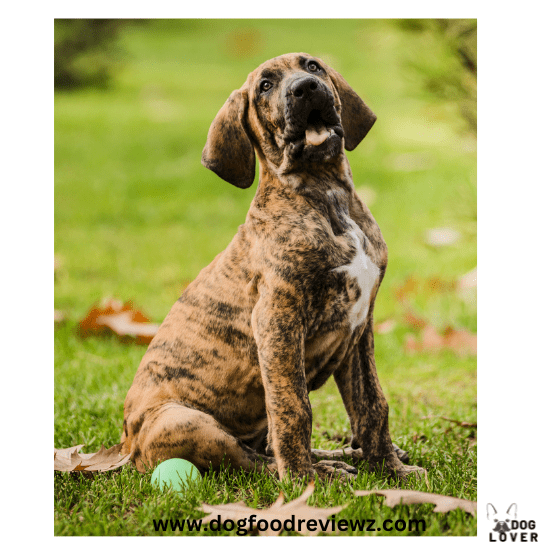A Brindle Frenchie has a beautiful coat that gives them an irresistible appeal.
But what DNA does a brindle Frenchie carry to produce this coat pattern?
This guide will tell you everything you need to know about brindle and other French Bulldog color genetics.
Ready?
Let’s get right to it.

French Bulldog Color Genetics Explained
French Bulldogs come in a wide variety of colors and patterns. This is determined by the kind of genes they carry. Every trait in French Bulldogs comes from two pairings inherited from both parents. In the case of recessive genes, an offspring will need two copies of the gene, while for dominant genes, it will need a single copy to reveal the color or trait.
French Bulldog Color Genes
The following are some genes responsible for the different color variations in French Bulldogs.
A-Locus (Pattern)
A-Locus is a short form for the Agouti locus. Also known as the fawn, sable, tri-color, or solid black gene. This gene impacts the locational and temporal distribution of eumelanin and phaeomelanin. In conjunction with E-Locus, this gene controls where and when the two pigments will be produced in a pattern.
The A-locus holds four alleles as follows:
- Ay -For fawn
- At – For tan/tri-color
- ‘’a’’- For solid color
- ‘’Aw’’ – For sable
Some of the possible combinations of the alleles include:
- At/At, which will result in a Frenchie having two copies of tan
- Ay/Ay is giving two copies of Fawn.
- At/a will have one copy of tan points and one copy of a solid color
- Ay/At will have 1 copy of Fawn and 1 copy of Tan points.
If Ay is present, it will outweigh the other genes, resulting in a fawn Frenchie. However, if brindle ( K-Locus) is present, the At fawn gene won’t appear because they act in tandem. The ‘’At’’ tan point will predominate, and the Frenchie will have tan points if both the ‘’At’’ and ‘’a’’ genes are present. The ‘’a’’ solid gene needs both copies to function.
B-Locus (Brown / Testable Chocolate)
This gene produces brown, also known as testable chocolate, by working with other genes to create Isabella French Bulldogs. Since this is a recessive gene, the French Bulldog must have two copies to exhibit the testable chocolate hue. This will be indicated as b/b or state that the B-locus contains two copies. The French Bulldog will be a carrier if it has only one copy.
The possible combinations are:
- b/b ( 2 copies) -The Frenchie will display testable chocolate
- B/B or N/N (no copies) – The Frenchie does not have the testable chocolate gene
- B/b or b/N ( Has 1 copy of the gene)- The French Bulldog carries but does not display testable chocolate.
Cocoa
Compared to the B-locus, the primary chocolate gene produces a different hue of brown. It also appears differently when paired with other visible hues. Cocoa is a recessive gene and thus needs two copies for the color to appear. The possible combinations are:
- co/co ( two copies of the cocoa gene)- The Frenchie is visibly cocoa.
- N/N or COCO (no copies of the gene) – The Frenchie will not have the cocoa gene
- N/co (a single copy of the gene) – The Frenchie carries but does not display cocoa.
D-Locus (Blue)
The D-locus is also the blue gene. This is a dilute gene that is responsible for lessening coat color saturation. When alone, this gene produces a blue French Bulldog, but mixed with other hues, it creates Lilacs and Isabella Frenchies. This is how the blue gene appears:
- d/d (2 copies) – The Frenchie will be blue
- D/D or N/N (No copies)- The dilute gene is absent
- D/d or N/d (one copy) – The do carries the dilute gene but does not display it
E-Locus (Cream)
Also called the cream gene, E-locus produces cream or white/yellow Frenchies. Two copies are needed for it to be seen, and when present, it will dominate over other colors and patterns.
The E-locus on a Frenchie can also appear as Em, a dark mask around the mouth. Sometimes, the E-locus will be split into 2, one for ‘’E’’ and another for ‘’Em’’. No matter the case, there must be two copies of the gene.
This can come in a combination of a mask and color gene (Em/e), two masks (Em/Em), or just a color gene (e/e). Since ‘’E’’ is the typical black base for most Frenchie hues, the presence of Em will produce a dark mask. The presence of two copies of the E-locus will result in a Frenchie with a white or cream base.
In summary, this is how E-locus can appear:
- e/e (two copies of cream)- The Frenchie is visibly cream
- e/E (Single copy of cream)- The dog carries cream but does not display it.
- E/E (no copies of cream)- The Frenchie does not carry cream
- e/Em (one copy of cream and one copy of mask)- The Frenchie will have a mask and carry cream but does not display it.
- E/Em (one copy of mask) or Em/Em (two copies of mask)- The Frenchie will have a mask.
K-Locus (Black/Brindle)

This is also the black or brindle gene. This gene does not need two copies to be intensified; a single copy is sufficient to manifest. Only two alleles are found in the K-locus; Kbr for brindle and Ky for black. The following ways can express the gene:
- K/K, Kb/Kb, or Kbr/Kbr (Two copies of brindle) -The Frenchie will be visibly brindle.
- N/N or Ky/Ky (no copies)-The dog does not carry a brindle.
- K/N, Kb/n, KB/Ky, or Kbr/Ky ( one copy) -The dog will be visibly brindle.
S-Locus (Piebald / Spotting)
The S-Locus or piebald gene is a recessive gene and thus requires two copies for display. This gene causes random removal of pigments resulting in large patches of a different color. To denote the presence of a copy, this gene is expressed as S or Sp on tests.
However, some tests give S to denote a negative outcome for Piebald. While this gene is dominant in some breeds and requires a single copy, French Bulldogs need both copies to display the brindle color expressed as:
- S/S or Sp/Sp (two copies)-The Frenchie will display piebald.
- N/N ( no copies) – The Frenchie does not have a piebald
- N/S or Sp/S (one copy)- The dog carries but does not display piebald.
Merle
This dominant gene results in random spotting or mottling in a French bulldog’s coat. Having a single copy of this gene is preferable as two copies of the Merle gene can result in vision and hearing disorders in Frenchies expressed as:
- M/M (two copies of Merle)- The Frenchie will be Merle and is prone to hearing and vision problems.
- N/N (no copies) – The Frenchie is not merle
- M/N (One copy)- The dog is merle
Fluffy ( Long-Hair)
For Frenchies to be fluffy, they must have two copies of the long-hair gene expressed as:
- l/l (two copies)- For long-haired Frenchies.
- L/L ( no copies) – The Frenchie does not carry the long-hair gene
- L/l (one copy) -The dog carries the gene but does not display long hair.
Intensity
This gene affects the saturation of the red or yellow color resulting in extreme dilution. When both copies are present, it affects coat color expressed as:
- i/i (two copies)- The Frenchie displays intensity.
- I/I (No copies) – The Frenchie does not carry intensity.
- I/i (one copy) – The Frenchie will be a carrier but will not visibly display intensity.
How French Bulldog Colors & DNA Works
French Bulldogs’ coats come in diverse colors and patterns, some standard while others are rare. The breeders of these dogs need to have a complete understanding and functionality of the DNA to develop the desired colors.
Locus – ( An overview of DNA)
The nucleus of canine cells contains vital genetic data. A dog’s cells have 39 pairs of chromosomes, 39 from the mother and another 39 from the father. A Frenchie’s gender is determined by one of these pairs, while the other pairs determine everything else about it. These chromosomes include thousands of genes that determine Frenchie’s characteristics.
A locus is a physical site or location of a specific gene on a chromosome. It’s the location or position where alleles are stored. Each gene has two alleles, one from each parent, placed at specific loci on a chromosome. When Frenchies breed, each parent randomly gives one allele from each locus, giving each allele a 50% probability of being passed down to a Frenchie offspring.
The Dominant And Recessive Alleles
An allele is defined as one of the two or more versions of a genetic sequence on a locus. An allele can either be dominant or recessive. A dominant allele needs only a single copy of a specific gene to be expressed. On the other hand, recessive alleles need two copies of a particular gene to be displayed.
A Frenchie’s complete coat color expression is displayed when Loci are joined. The Locus and Allele script describes Frenchie’s color DNA in letters.
The Big and Small Letters
Large and small letters represent alleles and indicate whether a Frenchie is a carrier or non-carrier of a certain color trait. If big letters are present, the dog does not display that specific feature, but if only small letters are present, the Frenchie carries the color gene.
Some colors such as cream, blue, pied, testable chocolate, and cocoa result from recessive genes and thus need two copies in the same locus for the color to be expressed on a Frenchie’s coat. A blue Frenchie, for instance, will d/d while a cream Frenchie will be e/e. A Frenchie will not display the blue hue if only one copy of the blue gene (D/d) is present.
Other genes, such as Brindle and Merle, are dominant, meaning a single copy of the gene can express the color.
French Bulldog Colors List
Frenchies come in various colors; some are standard, rare, and exotic.
The Standard Colors
American Kennel Club (AKC) accepts standard French Bulldog colors. Frenchies with the standard colors can participate in any AKC shows. Some of these colors include:
The Exotic/Rare Colors
The AKC does not recognize other rare colors and cannot participate in-ring shows. Some rare or exotic colors include merle, blue, lilac, isabella, and chocolate.
Color Genetics (DNA) Patterns and Masks
Brindle French Bulldog Pattern
Brindle is a dominant gene and thus requires only one copy for the hue to manifest in a Frenchie. This gene is also called a dominant black gene, denoted as Kbr, K, or KB. The lack of this gene is denoted as KY. A Frenchie with the brindle gene is denoted as Kb/Kb, while a Frenchie with only one copy of the gene is expressed as KB/KY. If a dog is KY/KY, it has no brindle copies.
Cream French Bulldog
Cream Colored Frenchies come in an off-whitish coat color that results from a recessive gene. A Frenchie must have two copies of the cream gene (e/e) to display the cream coat color. Cream Frenchies also have black coloring around their eye rims, paw pads, noses, and lips without marking.
Piebald French Bulldog Pattern
Piebald is not a color but rather a pattern. They have a white or unpigmented base coat with pigmented spots all over the body. For a Frenchie to be considered piebald, it must have two copies of the S gene (s/s). A Frenchie with only one copy of the S gene (s/n) will be a carrier but not display the piebald coat pattern.
Black French Bulldog
A black Frenchie has a solid-colored coat with a brindle. Black Frenchies have the genotype a/a at the A-locus.
Fawn French Bulldog
Fawn Frenchies have the genotype Ay/Ay or Ay/a. The fawn coat color comes in diverse shades that range from light tan to cream color to a deep red fawn.
Mask French Bulldog Pattern
A mask pattern is expressed as ‘’Em’’ at the E-locus. This is displayed on a dog’s face. A Frenchie will require only one copy of this gene to display the mask.
The Fad Frenchie Colors and Patterns
The AKC does not qualify Fad French Bulldog colors and patterns to participate in shows and competitions.
Rare French Bulldog Colors
The following are some of the rare French Bulldog colors available:
Merle French Bulldog Pattern
The Merle pattern results from a dominant gene that dilutes the color of specific parts of a dog’s coat. Being a dominant gene, a dog will require only a single copy of the gene for the merle pattern to manifest.
The Merle gene is at M-locus and is represented by ‘’M’’ in genetic coding. The Merle pattern is associated with some health issues. Breeding two Merles is not advisable as it creates serious health problems. Merle Frenchies are very uncommon, which makes them quite expensive.
Chocolate French Bulldog
Being a recessive gene, a Frenchie will need two copies of the chocolate gene, denoted as co/co, for it to be displayed. A Frenchie with a single copy (Co/co) will be a carrier but not display the chocolate hue.
The B-locus also holds a testable chocolate variant. This is also a recessive gene and thus requires two copies of the b gene to manifest. Thus, a Frenchie with the testable chocolate gene will have the genotype b/b. A Frenchie with only one copy of the b gene expressed as B/b is considered a carrier.
Blue French Bulldog
Blue Frenchies result from a recessive color dilution gene that gives Frenchie’s coat a dark gray-bluish color. The dilution is also visible around the dog’s ears, nose, paw pads, lips, and mask. For the unique color to be displayed, a Frenchie must have two copies of the blue gene denoted as d/d at the D-locus. The Blue Frenchies come in different colors depending on the Agouti locus.
Isabella French Bulldog
Isabella Frenchies result from the testable chocolate gene (b/b) plus the blue dilution gene (d/d), giving the dogs a distinctive mixture of blue and chocolate hues. Both are recessive genes; thus, two copies of each are needed for a Frenchie to display the Isabella hue.
Lilac French Bulldog
The Lilac coat color comes from the blue dilution gene (d/d) found at the D-locus and the chocolate gene(b/b) found at the C-locus. This is expressed as a recessive gene requiring two copies of each. A Frenchie with two copies of the dilution gene will exhibit a purplish hue.
Tri French Bulldog
Tri-color Frenchies have a base coat of one color, with two other colors forming markings. The ‘’At’’ gene found in the A-locus is responsible for the tri-color coat in Frenchies. Tri Frenchies come in a wide variety, including blue and tan, Merle and tan, chocolate and tan, black and tan, and lilac and tan.
When present, the At gene predominates over other genes. A Frenchie must be At/At or At/a to express the tan points. Besides A-locus, Tri-Frenchies also carry D-locus, B-locus, and M-locus, which determine their coat color.
New Shade Isabella
The New Shade Isabella is one of the rarest coat colors for Frenchies. This is mainly because to create a new shade, Isabella, a Frenchie, must have two copies of 3 recessive genes. This color requires a combination of the dilution gene (d/d), cocoa gene (co/co), and the brown gene (b/b) to manifest.
French Bulldog Coat Markings
French Bulldogs come with diverse coat colors and markings. While the AKC recognizes several of these markings, others are disqualified as a standard for the breed. Some of the recognized French coat markings include:
- Brindle markings: Dark stripes on a lighter background color. The background colors can come in different shades.
- Black mask: Frenchies with a black mask have a unique black mask around their face covering the eyes and muzzle, with the remaining part of the coat being any color.
- White markings: Large or small patches of white on a Frenchie’s coat. The patches can appear anywhere on the body.
- Piebald: Frenchies with the piebald pattern have a white background with large spots of any other color that can appear anywhere on the body.
- Black markings: Random black patches on the coat can appear on any body part.
Disqualified French Bulldog Coat Markings
While there are many coat markings that the AKC accepts for French Bulldogs, these pups can come in other markings which are disqualified. However, AKC does not allow them to participate in shows. The disqualified markings for Frenchies include:
- Spotted: This consists of minute, uniformly spaced spots of color on a white or light-colored background. This marking, which can vary in size and shape, generally enhances the beauty of Frenchies.
- Ticked: Has small dots or specks of color on a white or light-colored background.
- Tan points: This refers to tan or rust-colored markings on specific body areas, including cheeks, legs, eyebrows, and under the tail.
What is the brindle gene in French Bulldogs?
Kbr is the gene for brindle French Bulldogs. This gene lives on the K-locus, and it’s what determines whether a dog is brindle or not. A brindle Frenchie has the genotype kbr/kbr. A Frenchie with one copy of the brindle gene denoted as Kbr/ky will be a carrier but will not display this marking.
What colors do brindle French Bulldogs carry?
Brindle Frenchies come in a darker-colored coat with a mixture of lighter hairs. While the brindle pattern usually consists of a light shade of fawn, the base coat may range from black, blue, lilac, or chocolate.
What is the DNA for brindle?
Brindle French Bulldogs have the genotype kbr/kbr located in the K-locus.
Is brindle a strong gene?
Yes, brindle is a dominant gene, and it will only require a single copy for the pattern to manifest. However, the brindle gene is recessive to the black-colored gene.
What is special about brindle dogs?
Brindle dogs stand out because of their tiger-like stripes in various colors like red, fawn, silver, and black.
What colors are brindle dominant?
Brindle is dominant over ky which is a normal expression in dogs but recessive to black (KB)
What two colors make brindle?
The two main colors that make brindle are black and brown. Brindle typically appears as black stripes on a reddish base.
Are brindle French bulldogs rare?
No, brindle French Bulldogs are not rare. Brindle is among the most common color for Frenchies. However, some shades of brindle Frenchies are very rare and expensive.
Is Brindle purebred?
Yes, brindle French Bulldogs are purebred and recognized by the AKC. To create a brindle Frenchie, you must breed two Frenchies with the brindle gene together.
How do I know if my dog is brindle?
You can tell if a Frenchie is brindle by the tiger-like stripes on its coat. However, the best way to confirm this is by doing a DNA test.
Final Verdict
Brindle French Bulldogs have a unique coat appearance marked by tiger-like stripes on a lighter base. This gives them an additional appeal and makes them very popular. These dogs result from a brindle gene (Kbr) which is recessive to the black gene (KB) but dominant over the normal expression (ky). A brindle Frenchie should have two copies of the brindle gene.
Brindle French Bulldogs come in different color variations. While brindle Frenchies are not very rare, some brindle varieties are extremely rare and expensive. To ensure you get a healthy brindle Frenchie, purchase from a reputable breeder.


